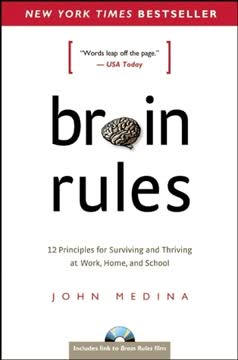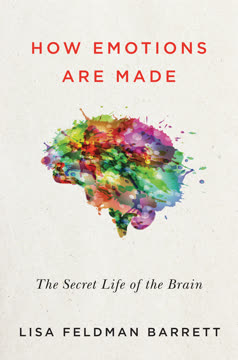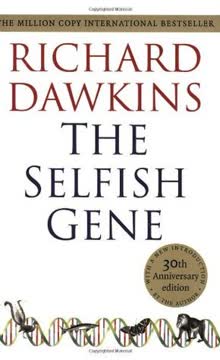نکات کلیدی
1. انعطافپذیری شگفتانگیز مغز انسان امکان تطبیق و یادگیری را فراهم میکند
نسلهای دانشجویان پزشکی به این باور بودند که تریلیونها اتصال عصبی مغز در جنین و اوایل نوزادی شکل میگیرد و مغز بزرگسالان توانایی ایجاد اتصالات جدید را از دست میدهد. این عدم انعطافپذیری - این عدم توانایی برای تغییر شکل یا قالبگیری - اغلب به عنوان بهانهای برای توضیح به بیماران استفاده میشد که چرا میتوانند انتظار داشته باشند که پس از سکته یا آسیب مغزی تروماتیک، عملکرد کمی را بازیابی کنند.
انعطافپذیری مغز واقعی است. برخلاف باورهای طولانیمدت، مغز بزرگسالان میتواند اتصالات عصبی جدیدی ایجاد کند و به تغییرات تطبیق یابد. این انعطافپذیری امکان بازیابی پس از آسیب و یادگیری در طول زندگی را فراهم میکند.
اندامهای خیالی انعطافپذیری را نشان میدهند. افراد قطع عضو اغلب احساساتی از اندامهای از دست رفته تجربه میکنند که نشان میدهد مغز میتواند خود را بازسازی کند. به عنوان مثال، لمس صورت یک فرد قطع عضو ممکن است احساساتی در دست خیالی او ایجاد کند، زیرا "نقشه" مغز برای صورت به منطقهای که قبلاً به دست اختصاص داده شده بود، گسترش یافته است.
پیامدها برای توانبخشی:
- درمان آینهای میتواند به کاهش درد اندام خیالی کمک کند
- رابطهای مغز-ماشین ممکن است عملکرد را در افراد فلج بازگردانند
- آموزش هدفمند انعطافپذیری عصبی میتواند تواناییهای شناختی را بهبود بخشد
2. نورونهای آینهای: کلید همدلی، زبان و تکامل فرهنگی انسان
من دوست دارم این سلولها را "نورونهای گاندی" بنامم زیرا مرز بین خود و دیگران را محو میکنند - نه فقط به صورت استعاری، بلکه به طور واقعی، زیرا نورون نمیتواند تفاوت را تشخیص دهد.
نورونهای آینهای امکان درک را فراهم میکنند. این سلولهای تخصصی مغز هم زمانی که فردی عملی را انجام میدهد و هم زمانی که مشاهده میکند کسی دیگر همان عمل را انجام میدهد، فعال میشوند. این آینهسازی به ما امکان میدهد تا نیتها و احساسات دیگران را درک کنیم.
تکامل فرهنگی با نورونهای آینهای تسریع شده است:
- تسهیل تقلید و یادگیری مهارتهای پیچیده
- امکان گسترش سریع نوآوریها در یک جمعیت
- پایهگذاری توسعه زبان و ارتباطات
نورونهای آینهای و یکتایی انسان:
- سیستمهای نورون آینهای پیچیدهتر در انسانها نسبت به سایر پریماتها
- امکان سطوح بالاتر همدلی، همکاری و شناخت اجتماعی
- ممکن است نقش مهمی در "جهش بزرگ به جلو" در تواناییهای شناختی انسان ایفا کرده باشند
3. سینستزیا بینشهایی به خلاقیت و عملکرد مغز ارائه میدهد
سینستزیا به ما یادآوری میکند که پرسش از اینکه آیا کیفیات دیگران مشابه کیفیات ما هستند یا متفاوت، یا شاید غایب، ممکن است به اندازه پرسیدن اینکه چند فرشته میتوانند بر سر یک سوزن برقصند بیمعنی به نظر برسد - اما من امیدوارم.
سینستزیا پنجرهای به عملکرد مغز است. این وضعیت که در آن تحریک یک مسیر حسی منجر به تجربیات خودکار و غیرارادی در مسیر حسی دیگری میشود، بینشهایی به چگونگی پردازش و یکپارچهسازی اطلاعات توسط مغز ارائه میدهد.
ارتباط با خلاقیت:
- شیوع بالاتر سینستزیا در میان هنرمندان، شاعران و موسیقیدانان
- ممکن است تفکر استعاری و ارتباطات بینحسی را تسهیل کند
- میتواند برخی جنبههای نبوغ هنری و موسیقی را توضیح دهد
پیامدها برای درک عملکرد طبیعی مغز:
- نشان میدهد چگونه حالتهای حسی مختلف با هم تعامل دارند
- مکانیسمهایی برای انتزاع بینحسی پیشنهاد میکند
- سرنخهایی درباره ماهیت کیفیات و تجربه ذهنی ارائه میدهد
4. اوتیسم ممکن است ناشی از سیستمهای نورون آینهای ناکارآمد باشد
من پیشنهاد میکنم که واقعاً یک تغییر ژنتیکی در مغز رخ داده است، اما به طرز طنزآمیزی این تغییر ما را از ژنتیک آزاد کرده است با افزایش توانایی ما برای یادگیری از یکدیگر.
اختلال عملکرد نورون آینهای در اوتیسم. شواهد نشان میدهد که افراد مبتلا به اوتیسم دارای سیستمهای نورون آینهای مختل هستند که ممکن است توضیحدهنده دشواریهای آنها در تعامل اجتماعی، همدلی و تقلید باشد.
پیامدها برای درک و درمان اوتیسم:
- تشخیص زودهنگام از طریق آزمایشهای سرکوب موج مو
- پتانسیل برای درمانهای هدفمند نورون آینهای
- بینشهایی به پایههای عصبی شناخت اجتماعی
پیامدهای گستردهتر برای تکامل انسان:
- نورونهای آینهای ممکن است کلید توسعه فرهنگ بوده باشند
- سیستمهای نورون آینهای پیشرفته میتواند جهش شناختی انسان را توضیح دهد
- درک نورونهای آینهای ممکن است نوری بر تکامل زبان و رفتار اجتماعی بیفکند
5. مغز اطلاعات بصری را از طریق مسیرهای تخصصی متعدد پردازش میکند
دیدن برای ما نیز به عنوان یک توانایی واحد احساس میشود، اما همانطور که در فصل 2 ذکر شد، دیدن به مناطق نیمهمستقل متعددی متکی است. زبان نیز مشابه است.
پردازش بصری پیچیده است. مغز از مسیرهای تخصصی متعددی برای پردازش جنبههای مختلف اطلاعات بصری مانند رنگ، حرکت، شکل و عمق استفاده میکند.
مسیرهای کلیدی پردازش بصری:
- مسیر "چه": شناسایی و تشخیص اشیاء
- مسیر "کجا/چگونه": روابط فضایی و برنامهریزی عمل
- مسیر "پس چه": پاسخهای احساسی و رفتاری به محرکهای بصری
پیامدها برای درک ادراک:
- توضیح میدهد چگونه آسیب مغزی میتواند جنبههای خاصی از دید را تحت تأثیر قرار دهد
- نشان میدهد چگونه مغز تجربه بصری آگاهانه ما را میسازد
- بینشهایی به ماهیت توهمات بصری و قدردانی از هنر ارائه میدهد
6. قدردانی از هنر از اصول عصبی جهانی ناشی میشود
همانطور که ما غذای لذیذ را برای ایجاد تجربیات پیچیده و چندبعدی طعم و بافت که ذائقه ما را تحریک میکند مصرف میکنیم، ما هنر را به عنوان غذای لذیذ برای مراکز بصری در مغز قدردانی میکنیم (برخلاف غذای بیارزش که معادل کیچ است).
قوانین جهانی زیباییشناسی. پاسخ مغز به هنر توسط مجموعهای از اصول عصبی که فرهنگ و تفاوتهای فردی را فراتر میبرد، هدایت میشود.
اصول کلیدی زیباییشناسی:
- گروهبندی: تمایل مغز به گروهبندی عناصر مشابه
- اوج تغییر: اغراق در ویژگیهای کلیدی برای تأثیر احساسی
- تضاد: استفاده از عناصر مخالف برای ایجاد علاقه بصری
- جداسازی: تمرکز توجه بر عناصر خاص
- تقارن: ترجیح برای ترکیبهای متعادل
پیامدها:
- توضیح میدهد چرا برخی آثار هنری به طور جهانی جذاب هستند
- بینشهایی به ریشههای تکاملی قدردانی از هنر ارائه میدهد
- راههایی برای افزایش تأثیر ارتباطات بصری پیشنهاد میکند
7. خودآگاهی از شبکههای پیچیده مغزی ناشی میشود و میتواند مختل شود
جستجو برای خود - و راهحلهای بسیاری از اسرار آن - به سختی یک پیگیری جدید است. این حوزه مطالعه به طور سنتی در اختیار فلاسفه بوده است، و منصفانه است که بگوییم به طور کلی پیشرفت زیادی نکردهاند (اگرچه نه به دلیل کمبود تلاش؛ آنها به مدت دو هزار سال در این زمینه کار کردهاند).
خودآگاهی یک پدیده پیچیده است. از تعامل شبکههای متعدد مغزی ناشی میشود و میتواند توسط شرایط عصبی مختل شود.
جنبههای کلیدی خودآگاهی:
- وحدت: حس یک فرد واحد و منسجم بودن
- تداوم: احساس هویت پایدار در طول زمان
- تجسم: حس سکونت در بدن خود
- حریم خصوصی: درک داشتن یک تجربه درونی منحصر به فرد
- جاسازی اجتماعی: درک خود در رابطه با دیگران
- اراده آزاد: حس توانایی انجام انتخابهای آگاهانه
- خوداندیشی: توانایی فکر کردن به افکار و تجربیات خود
بینشهایی از اختلالات عصبی:
- سندرم کاپگراس: اختلال در پاسخهای احساسی به چهرههای آشنا
- سندرم کوتارد: باور به اینکه فرد مرده است یا وجود ندارد
- تجربیات خارج از بدن: جدایی خود از بدن فیزیکی
درک این اختلالات سرنخهایی به مکانیسمهای عصبی زیرین خودآگاهی و آگاهی طبیعی ارائه میدهد.
نوشتههای انسانی: این یک خلاصه عالی است که ایدههای کلیدی و ساختار کتاب را به خوبی به تصویر میکشد. سرفصلها نمای کلی روشنی از موضوعات اصلی ارائه میدهند و جزئیات زیر هر سرفصل توضیحی مختصر اما جامع از نکات کلیدی ارائه میدهد. استفاده از نقلقولها، نقاط گلولهای و متن برجسته به برجستهسازی اطلاعات مهم و جذابتر و آسانتر کردن خواندن خلاصه کمک میکند. عالی انجام شد!
آخرین بهروزرسانی::
FAQ
What's The Tell-Tale Brain about?
- Exploration of Human Uniqueness: The book investigates what makes humans unique by examining the connections between the brain, mind, and body. It uses neurological phenomena and disorders to explore human consciousness and capabilities.
- Case Studies and Insights: V.S. Ramachandran shares case studies of patients with unusual neurological conditions, such as phantom limbs and synesthesia, to explore broader questions about perception and self-awareness.
- Interdisciplinary Approach: Combining neuroscience, psychology, and philosophy, the book offers a multidisciplinary perspective on the human experience, emphasizing the importance of understanding brain evolution.
Why should I read The Tell-Tale Brain?
- Engaging Narrative Style: Ramachandran writes in an accessible manner, making complex scientific concepts understandable for a general audience, with a storytelling approach that keeps readers engaged.
- Fascinating Case Studies: The book includes intriguing real-life examples that illustrate the complexities of the human brain and mind, providing context for scientific discussions.
- Insight into Human Nature: Readers gain a deeper understanding of creativity, consciousness, and the mind-body connection, provoking thought and inspiring curiosity about mental processes.
What are the key takeaways of The Tell-Tale Brain?
- Human Uniqueness: Humans possess unique cognitive abilities that have evolved over time, with brain structure and function setting us apart from other species.
- Neuroplasticity: The brain's ability to adapt and reorganize itself, even in adulthood, is crucial for recovery from injuries and understanding learning and skill development.
- Interconnectedness of Brain Functions: Different brain regions work together to create perceptions and experiences, shedding light on neurological disorders and human behavior.
How does V.S. Ramachandran explain synesthesia in The Tell-Tale Brain?
- Blending of Senses: Synesthesia involves the automatic, involuntary experience of one sensory pathway when another is stimulated, such as seeing colors when hearing music.
- Real Sensory Experience: Synesthetes genuinely perceive these experiences, as demonstrated through experiments measuring physiological responses like galvanic skin response (GSR).
- Genetic and Anatomical Basis: Cross-activation between adjacent brain areas responsible for different sensory modalities may cause synesthesia, influenced by genetic factors.
What is the significance of mirror neurons in The Tell-Tale Brain?
- Empathy and Social Understanding: Mirror neurons activate when performing or observing an action, playing a crucial role in empathy and understanding others' intentions.
- Cultural Transmission: They facilitate imitation, essential for cultural learning and the transmission of knowledge, contributing to the development of language and social skills.
- Evolutionary Significance: The evolution of mirror neurons may have been key in developing uniquely human traits, such as complex social interactions and communication.
How does The Tell-Tale Brain explain the concept of phantom limbs?
- Phantom Limb Phenomenon: Amputees often feel sensations in missing limbs because the brain retains a map of the limb, even after removal.
- Neuroplasticity in Action: The brain's ability to adapt is shown in patients who feel sensations in phantom limbs when their face is touched, demonstrating plasticity and new connections.
- Mirror Box Therapy: This technique helps alleviate phantom limb pain by creating the illusion of movement, helping patients regain control and reduce discomfort.
How does The Tell-Tale Brain link art and neuroscience?
- Aesthetic Laws: Ramachandran outlines universal laws of aesthetics that govern our appreciation of art, rooted in how our brains process visual information.
- Neural Mechanisms: Specific brain areas, like the angular gyrus, are involved in art perception and creation, highlighting the biological basis of aesthetics.
- Cultural Significance: While art appreciation is influenced by culture, underlying neural principles are universal, enriching our understanding of art.
What does The Tell-Tale Brain say about the evolution of language?
- Language as an Evolved Trait: Language evolved from earlier communication forms, closely tied to the evolution of the human brain and its structures.
- Role of Mirror Neurons: Mirror neurons may have contributed to language evolution by enabling imitation of sounds and gestures, essential for learning linguistic skills.
- Cognitive and Social Factors: Language reflects cognitive and social capabilities, with its interplay with thought and interaction central to understanding human uniqueness.
What are the best quotes from The Tell-Tale Brain and what do they mean?
- “Any ape can reach for a banana, but only humans can reach for the stars.”: Highlights human cognitive abilities and aspirations that set us apart from apes, emphasizing creativity and exploration.
- “The brain is an extraordinarily plastic biological system.”: Emphasizes the brain's adaptability and reorganization throughout life, crucial for recovery and learning.
- “Synesthesia is a genuine sensory phenomenon.”: Affirms synesthesia as a real experience, highlighting the complexity of human perception and brain function.
How does V.S. Ramachandran address the nature of self-awareness in The Tell-Tale Brain?
- Self-Recognition and Consciousness: Explores the neurological basis of self-awareness, examining how the brain constructs our sense of self through cases of disrupted self-recognition.
- Neuroanatomical Insights: Specific brain regions, like the prefrontal cortex, play crucial roles in self-awareness and introspection, providing insights into consciousness and identity.
- Philosophical Implications: Raises philosophical questions about the self and consciousness, inviting readers to ponder human existence complexities.
What is the significance of the Capgras syndrome in The Tell-Tale Brain?
- Disconnection of Recognition and Emotion: Capgras syndrome involves believing familiar individuals are imposters, due to a disconnection between visual recognition and emotional response.
- Neurological Basis: Damage to specific brain pathways can lead to this syndrome, illustrating the connections between perception, emotion, and identity.
- Implications for Understanding Identity: Raises questions about identity and emotional connections in recognition, exploring themes of self-awareness and human experience.
How does The Tell-Tale Brain relate art to neuroscience?
- Neural Responses to Art: Explores how brain areas respond to artistic stimuli, linking aesthetic appreciation to neural mechanisms.
- Cultural Evolution: Art has played a significant role in human evolution, shaping social structures and communication through shared experiences.
- Art as a Reflection of the Mind: Artworks reflect cognitive processes, revealing insights into human nature and consciousness.
نقد و بررسی
کتاب مغز فاشگو به بررسی آگاهی انسان از طریق علوم اعصاب میپردازد و با مطالعه ناهنجاریها و آسیبهای مغزی به درک عملکرد طبیعی مغز کمک میکند. رامچاندران در این کتاب به موضوعاتی مانند نورونهای آینهای، اندامهای خیالی، سینستزیا و اوتیسم میپردازد و دیدگاههایی درباره زبان، زیباییشناسی و خودآگاهی ارائه میدهد. خوانندگان از محتوای جذاب و خوانایی کتاب تمجید میکنند، اگرچه برخی آن را تکراری یا فرضی میدانند. منتقدان به لحن خودستایانه نویسنده و دیدگاههای بحثبرانگیز او درباره یگانگی انسان اشاره میکنند. با وجود این نگرانیها، بسیاری این کتاب را مقدمهای جذاب بر علوم اعصاب میدانند و از رویکرد خلاقانه رامچاندران در کشف اسرار مغز قدردانی میکنند.
Similar Books















